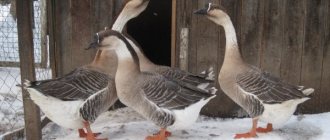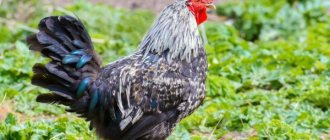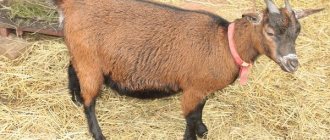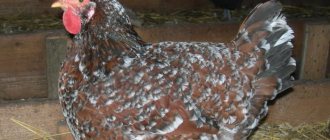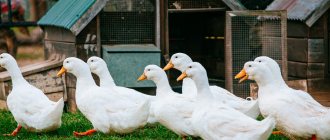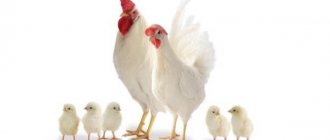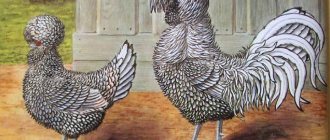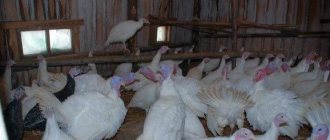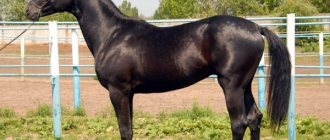Description and characteristics of the Manchurian breed
These cute golden birds can be considered a universal or compromise option for those who need not only eggs, but also meat. According to these indicators, they are superior to some species, but at the same time they are inferior to the leaders in these areas. For example, their carcass size and weight are smaller than the pharaohs, and their egg production is lower than the Japanese.
The appearance of these birds is admired by many and they are often kept in small groups, like ornamental birds.
The golden color of Manchurian quails is obtained as a result of alternating feathers with yellow and brown tints. The beak and legs are light. The eyes are dark in color. The color of the feather on the head is slightly darker than the color of the whole body. The color of males is more striking than that of females.
Beautiful golden color of quail
Reviews from Manchurian quail owners
Almost all poultry farmers agree that this breed is quite easy to care for. There are many forums on the Internet dedicated to the content of these beauties. Poultry house observations of birds come down to the following conclusions:
- With careful selection, a quail can gain about 450 g.
- The potential for weight gain of almost all varieties of quail, including Manchurians, is quite good, with the exception of representatives of the Texas breed.
- Birds are not recommended to be seated too tightly. It's better to have space for them to chase each other rather than spend the entire day lying down.
- Quails are great at keeping themselves warm.
- After stress, it takes up to 20 days to restore egg production.
Manchurian quails are very beautiful and cute birds that are also suitable for breeding for decorative purposes.
Proven homemade food recipe: corn - 25%, wheat - 20%, soybean cake - 25%, sunflower seed - 19%, limestone - 5.6%, vegetable oil - 3.4%, premix - 2%.
Most farmers put more effort into increasing the body weight of Manchurians than into increasing egg production.
Advantages and disadvantages
Like any breed, Manchurians have minor disadvantages and advantages when compared with other breeds.
Advantages
The average weight of Manchu carcasses is about 150 grams. But if you carefully select females and males for incubating eggs, you can significantly increase this figure - up to three hundred grams!
For example, the weight of quails of this breed bred in France often reaches 400 grams!
Main advantages:
- relatively large egg weight up to 12 grams;
- beautiful golden plumage is important when selling carcasses;
- high resistance to diseases;
- undemanding to feed.
Flaws
- low egg production - just over 220 eggs per year. With proper nutrition and maintenance, this figure can be raised to 270 eggs or more;
- The usual weight of a carcass is 260-290 grams, which can often become a problem when selling meat to catering establishments, since it does not fit into the usual portions.
Dietary quail eggs
Caring for quails
Correct maintenance in the initial stages of life is the key to good immunity in the future. In the first days after birth, chicks need constant heating. Until the chicks reach 7 days of age, it is necessary to maintain the air temperature in the cage at 36°C. After this period, the temperature is gradually reduced by 3-4° per week.
Compound feed for broiler chickens is perfect for feeding. In the first days, feeding begins with finely chopped, hard-boiled eggs and cottage cheese. Then gradually starting
Content
Cells
Contains Manchurian quails in cages. Many quail breeders have a slight difficulty in determining stocking density due to the different sizes of this bird. For example, quails of the Japanese breed are stocked at the rate of about one hundred heads per meter, but since the Manchurians are slightly larger, their numbers need to be proportionally reduced, for example, if the weight of the birds is 300 grams, then they need to be stocked at the rate of fifty heads per square meter.
When determining the height of cages for keeping quails of this breed, try to make sure that it is slightly higher than the birds themselves.
Some quail breeders recommend the following type of cage design for keeping this breed: three walls are made of plywood sheets, and the front one is made of lattice or mesh. This design is considered the best and quails feel quite comfortable in it. Not only are these cages free of drafts, but the limited view also makes them quieter. To save space, cells can be formed into a battery. The maximum height is five tiers.
Feeding adults
Feeders for birds are placed near the cage. This way you can reuse spilled food. Meals are taken 3 times a day. One individual receives 30 g of food per day.
To fatten livestock for meat, protein foods are added to the diet. To quickly gain weight, you can purchase special food from veterinary stores. You can cook it yourself. And how - read the article “Composition of feed for quails”.
This scheme is not suitable for laying hens. While gaining weight, females do not lay eggs well. For them, they purchase feed intended for laying hens. You need to add fresh herbs, mineral supplements to strengthen egg shells, boiled vegetables: potatoes, beets.
Video “How to distinguish a male from a female among the Manchus”
This video shows how you can accurately distinguish a female from a male in Manchurian quails
Lighting
For Manchurian quails, a seventeen-hour daylight period is recommended. In summer, the room is illuminated through the windows. In winter, it is necessary to turn on additional lighting. If the room is small, then one sixty-watt light bulb is enough. Do not forget that if the light is very bright, the bird may become aggressive; therefore, brightness above 35 lux is not recommended, and near feeding areas it should be even lower. Turning off and turning on the lights should occur according to a schedule at the same time.
Manchus. Female and male
Temperature
The temperature in which cages with Manchurian quails are installed should be within 18-25 degrees. This is a very important point in keeping them, because if the temperature drops to +16, the females stop laying eggs. If it is even lower, then the freezing birds will flock together, which can lead to injury, and the weakest ones may even die.
Humidity
Humidity is a very important factor and must be maintained between 60-70 percent. A significant deviation from these norms negatively affects the well-being of birds. For example, if the room is too dry, then Manchurian quails often drink and eat little, and as a result, a decrease in egg production and the rate of weight gain.
Ventilation
The room with cages must be equipped with a good ventilation system. No heat should escape through it, but fresh air should constantly flow in. It is very important! Quails have an accelerated metabolism, as a result of which oxygen is quickly burned. Fresh air should be supplied at the rate of 5 cubic meters per kilogram of bird weight in the summer and up to two cubic meters in the winter. Drafts are unacceptable, as they not only have a bad effect on the health of quails, but can also lead to their death.
Hygiene
Be sure to place an ash-sand bath in the quail’s cage at least once a week. This is necessary so that the bird has the opportunity to tidy up its feathers and get rid of parasites.
Breeding
For breeding, 3-4 females and one male, aged from two to eight months, are selected from different broods. A quail family is placed in one cage. When bred naturally, Manchurian quails exhibit hierarchy in the flock. Matriarchy reigns among birds. The leader female is the first to approach the feeder and drives away weak companions. The leader of the flock lays the largest eggs. The duration of incubation of quail eggs is 17 days.
See also
Description and characteristics of tuxedo quails, breedingRead
Leading females sometimes behave aggressively and peck their relatives. With age, the egg production of Manchurian quails decreases. Older individuals are inferior in strength to young ones and often die under their beaks. Quails lay eggs for a year, rarely two. Therefore, females that have passed the peak of egg production are transplanted into a separate cage and fattened.
To hatch chicks in an incubator, it is necessary to observe the temperature regime just as carefully as when keeping adult birds. Basic rules for incubation breeding:
- The shelf life of eggs before laying is no more than five days;
- storage temperature - +12 degrees;
- Place eggs warmed to room temperature in the incubator;
- choose medium-sized specimens of regular shape with intact shells;
- Before laying eggs, warm the incubator to sixty degrees;
- turn eggs every 4 hours.
Temperature and humidity in the incubator:
| Index | Days of incubation period | ||
| 1-12 | 13-15 | 16-17 | |
| Temperature (in degrees Celsius) | 37,7 | 37,2 | 37 |
| Humidity (percentage) | 60 | 50 | 70 |
The hatched chicks are placed in a brooder, setting the temperature to +36 degrees. For a month, the temperature is reduced by 5 degrees every week. Month-old chicks are transplanted into a regular cage and kept in the same conditions as adult quails.
Video “Bathing quails in sand baths”
Quails take sand baths.
Feeding and watering
Manchurian quails are fed in the same way as other birds of this species. The basis of the diet is grain:
- corn;
- millet;
- wheat
Greenery has a positive effect on the well-being of these birds. You can give the herb fresh. Nettle is also useful, but before serving it must be scalded with boiling water. In winter, greenery is also necessary for the Manchus, but since it is impossible to get it on the street at this time, you need to grow it yourself. To do this, boxes with soil are installed in the same room in which the poultry is kept and the grain of the following crops is sprouted:
- wheat;
- millet;
- oats
The grown greens need to be cut and diluted with other feeds.
The well-being and health of quails is positively affected by the introduction of vegetables into their daily diet:
- carrot;
- beet;
- potato;
- cabbage leaves.
Be sure to add crushed shells, gravel and chalk to the feeders.
Feeding the bird
Manchurian quails need to be fed three to four times a day. The following feeding schedule is recommended:
- in the morning – a third of the daily intake of cereals;
- after three hours, a wet mash consisting of herbs and grated vegetables is given;
- after another three hours, a similar mash to the previous one is repeated;
- after three to four hours (depending on daylight hours), the rest of the cereals are given.
Proteins of animal origin are especially beneficial for the health of quails, namely:
- chopped meat;
- fish, fish;
- cottage cheese.
It is worth paying attention to the fact that the mash is eaten completely by the bird. they may go sour. Dry combination food can sit for a long time. Feeding rates are determined experimentally while observing the bird.
The water should be fresh and changed at least every two to three days.
Breeding and Incubation
Breeding and incubating Manchurian quails is not much different from incubating quails of other breeds. You can read more on our website in the article: Breeding and incubation.
Young animals in a cardboard box
How and what to feed
The key to good health and high production performance is balanced feed and clean water. The basis of nutrition should be various grain crops. You can use ready-made feed or prepare mixtures yourself. The grain mixture should contain:
In the summer, your diet must include greens. During the cold season, you can germinate grain crops in greenhouses and introduce them into the diet green. The diet should also include root vegetables and cabbage. All these products, when ground, are very much to the taste of the birds.
As for the water, it should be at room temperature. The water should be changed every two days, not forgetting to thoroughly wash the drinking bowls. To prevent infectious diseases, chicks are given only boiled water. The cages should contain separate boxes with crushed shell rock, sand and chalk. Shell rock is needed for optimal calcium levels, and sand or ashes are needed so that the birds can make a mess, thus getting rid of parasites. Animal proteins in the form of cottage cheese, minced meat or fish should be introduced into the diet in small quantities. Normally, such products are given at 15 g per day. The birds are fed 3-4 times a day, equally distributing the daily allowance.
